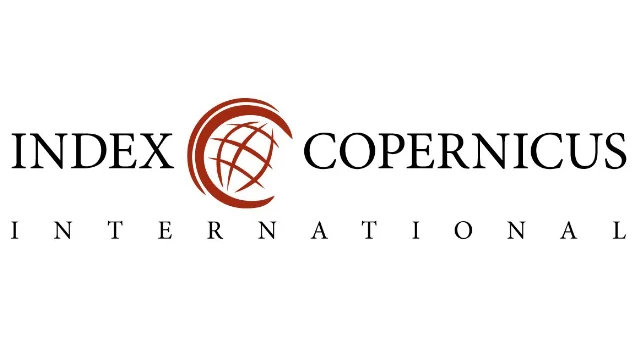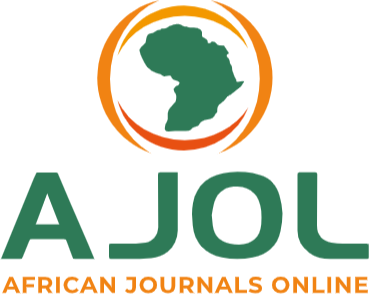Nutritional Compositions of the Nectar of Melliferous Plants and their Impact on Honey Production in Selected Vegetation Zones in Nigeria
Keywords:
Nectar, Melliferous Plants, Mangrove, Rainforest, Vegetation ZoneAbstract
Communication in Physical Sciences 2019, 4(1): 23-29
Authors: Ifiok D. Uffia, C. O. Akachuku & O. E. Udofia
Received 12 July 2019/Accepted 20 December 2019
Nutritional compositions of the nectar of melliferous plants and their impact on honey production were studied for 48 months in the mangrove vegetation (in Akwa Ibom and Rivers States in Nigeria) and rainforest vegetation (in Abia and Imo states in Nigeria). Nectar of melliferous plants was collected randomly for three years (2015-2017) and from two states in each of the vegetation zones during dry and raining seasons. Samples were also taken in the early and later stages of flowering and the plants selected for study were Helicteres ixora, Musa paradisiaca, Thevetia peruviana, Costus afer, Allamanda cathartica, Canna generalis and Setcreasea pallida. In each of the zones, nectar was extracted from the flowers directly, using a 10 µl capillary tube from the floral cup of 200-3000 flowers of melliferious plants. Measured concentrations of sugar and vitamins indicated that vitamin B2 contents had the least mean value of 0.066 mg/100g while vitamin C contents had highest mean value of 72.971 mg/100g. Mean concentrations of glucose, fructose and sucrose were 172.164 mg/100g, 172.893 mg/100g and 173.296 mg/100g respectively. Mean seasonal variability revealed that higher concentrations of vitamins and sugar in nectar of melliferous plants was in the dry season indicating that the rate of biochemical processes within plants that produces nectar increases with increase in temperature.
Downloads
Published
Issue
Section
Similar Articles
- Izuagbe Gilbert Osigbemhe , Muluh Emmanuel Khan, SYNTHESIS, SPECTROSCOPIC CHARACTERIZATION AND BIO-INVESTIGATION of N-(2-furylmethylidene)-1,3, 4-thiadiazole-2-amine and its Iron (III) COMPLEXES , Communication In Physical Sciences: Vol. 12 No. 4 (2025): VOLUME1 2 ISSUE 4
- Ahamefula A. Ahuchaogu, Chukwuemeka T. Adu, Review of Reverse Osmosis as Green Technology against Water Supply: Challenges and the way Forward , Communication In Physical Sciences: Vol. 6 No. 1 (2020): VOLUME 6 ISSUE 1
- Eneni Roberts Inala, BIOACCUMULATION OF ENVIRONMENTAL CONTAMINANTS IN OYSTER (Crassostea sp.) TISSUES IN BAYELSA STATE, NIGERIA , Communication In Physical Sciences: Vol. 12 No. 4 (2025): VOLUME1 2 ISSUE 4
- Aminu Ismaila, Abubakar Sadiq Aliyu, Yakub Viva Ibrahim, Evaluation of Gamma Radiation Dose Level in Mining Sites of Riruwai, Kano, Nigeria , Communication In Physical Sciences: Vol. 8 No. 1 (2022): VOLUME 8 ISSUE 1
- Aminu Ismaila, Abubakar Sadiq Aliyu , Yakub Viva Ibrahim, Evaluation of Gamma Radiation Dose Level in Mining Sites of Riruwai, Kano, Nigeria , Communication In Physical Sciences: Vol. 8 No. 1 (2022): VOLUME 8 ISSUE 1
- Mu’awiya Baba Aminu, Hareyani Zabidi, Juliet Ngozi Chijioke-Churuba, Saleh Mamman Abdullahi, Kolapo Fasina, Aliyu Abubakar, Muhammad Nurudeen Mashin, Abdulmalik Nana Fatima, Bertha Onyenachi Akagbue, Olusola Kolawole Ogunmilua, Environmental and Public Health Challenges of Phases Towards Cement Production, Remediation Monitoring and Evaluation Strategies , Communication In Physical Sciences: Vol. 12 No. 1 (2024): VOLUME 12 ISSUE 1
- I. I. Ibrahim, A. Absulazeez, A. Usman, M. U. Badeggi, A. I. Muhammad, Comparative Studies on Phytochemical Constituents Andantimicrobial Activity on Three Onion Species , Communication In Physical Sciences: Vol. 7 No. 4 (2021): VOLUME 7 ISSUE 4
- Christabel M. Eteghwia, Enoo Ojaikre, Efeturi A. Onoabedje, Chinweike C. Eze, Patience O. Adomi, 7-Chloroquinoline Sulphonamide Derivatives: Synthesis, Characterization, Biological and Drug-likeness Evaluation , Communication In Physical Sciences: Vol. 12 No. 1 (2024): VOLUME 12 ISSUE 1
- Musa Runde, M. H. Shagal, Y. Abba, Cow Dung and Kitchen Waste as Economical Source of Biogas: Production and Analysis , Communication In Physical Sciences: Vol. 7 No. 3 (2021): VOLUME 7 ISSUE 3
- Salihu Takuma, Siaka Abdulfatai Adabara, Kamal Suleiman Kabo, Gas Chromatography-Mass Spectrometry (GC-MS) Analysis of Some Plants Extract , Communication In Physical Sciences: Vol. 12 No. 2 (2025): VOLUME 12 ISSUE 2
You may also start an advanced similarity search for this article.




